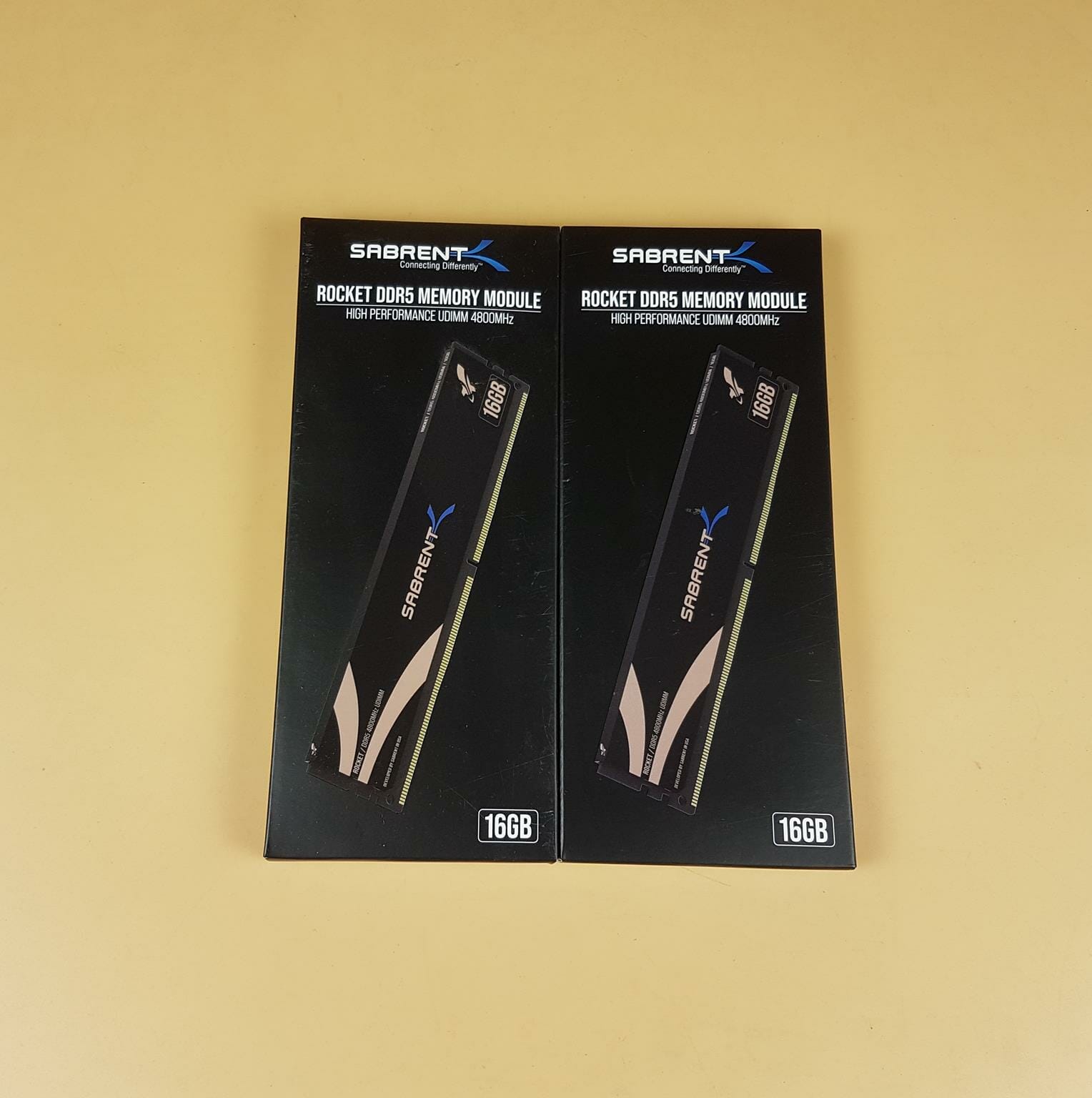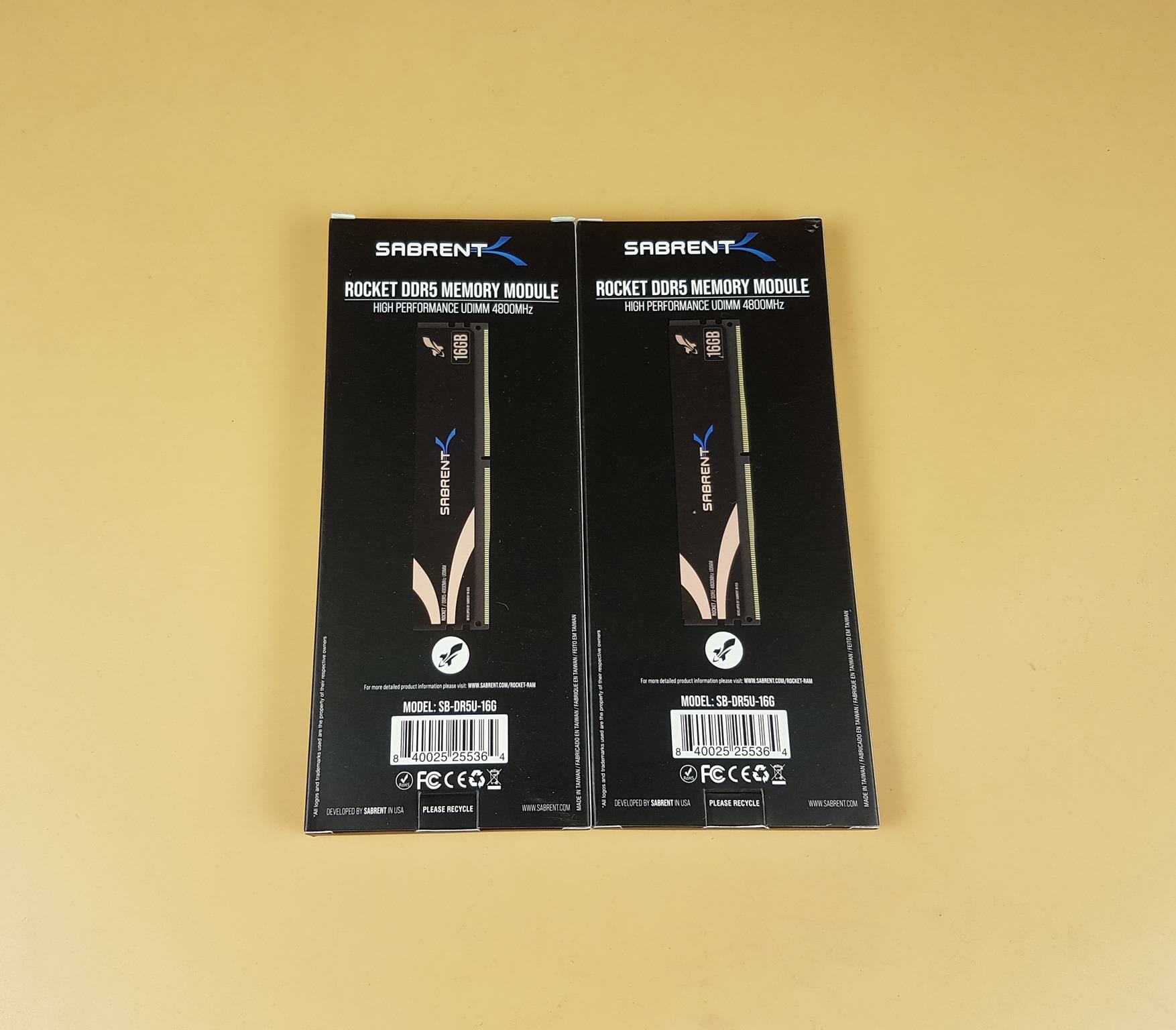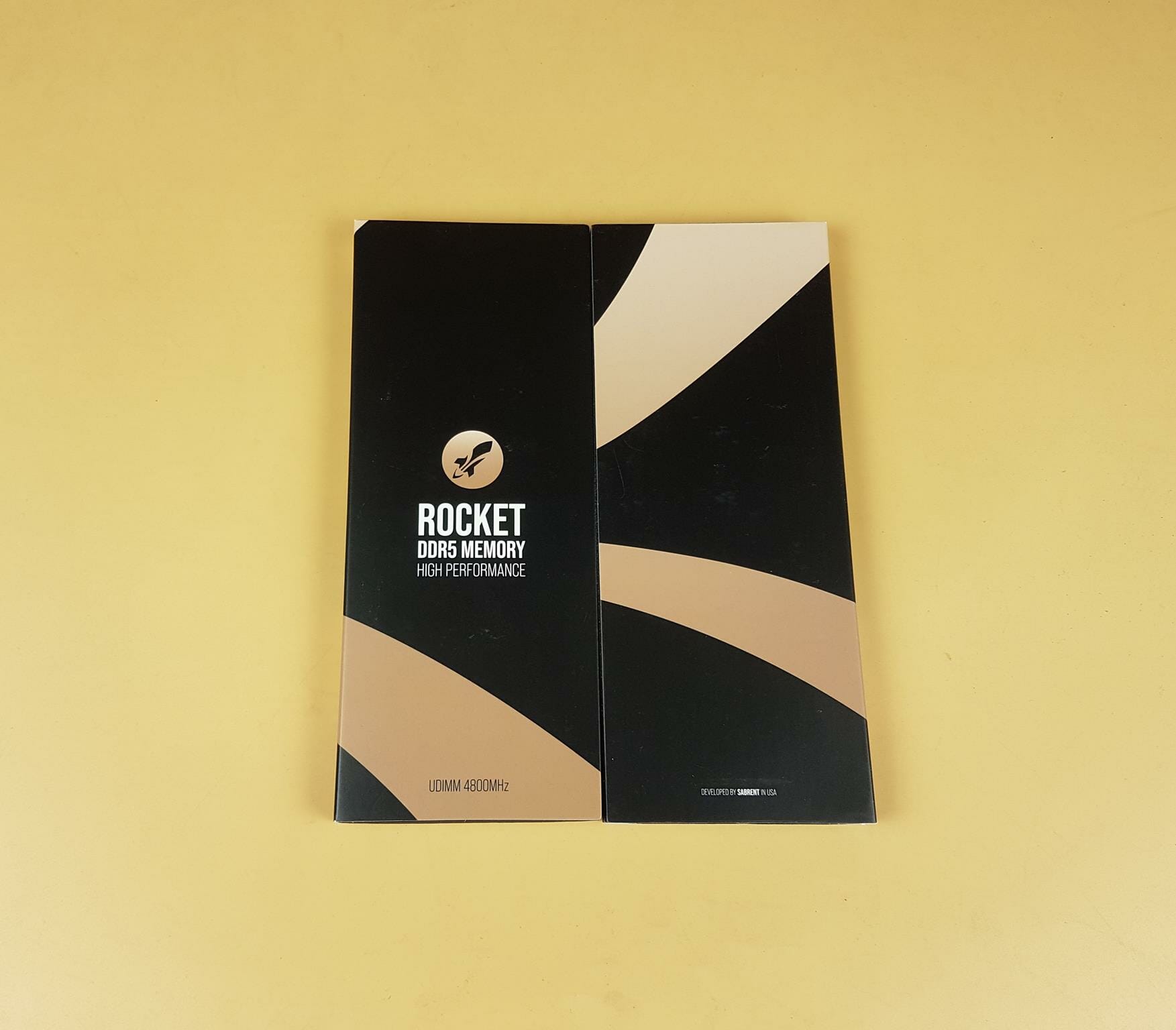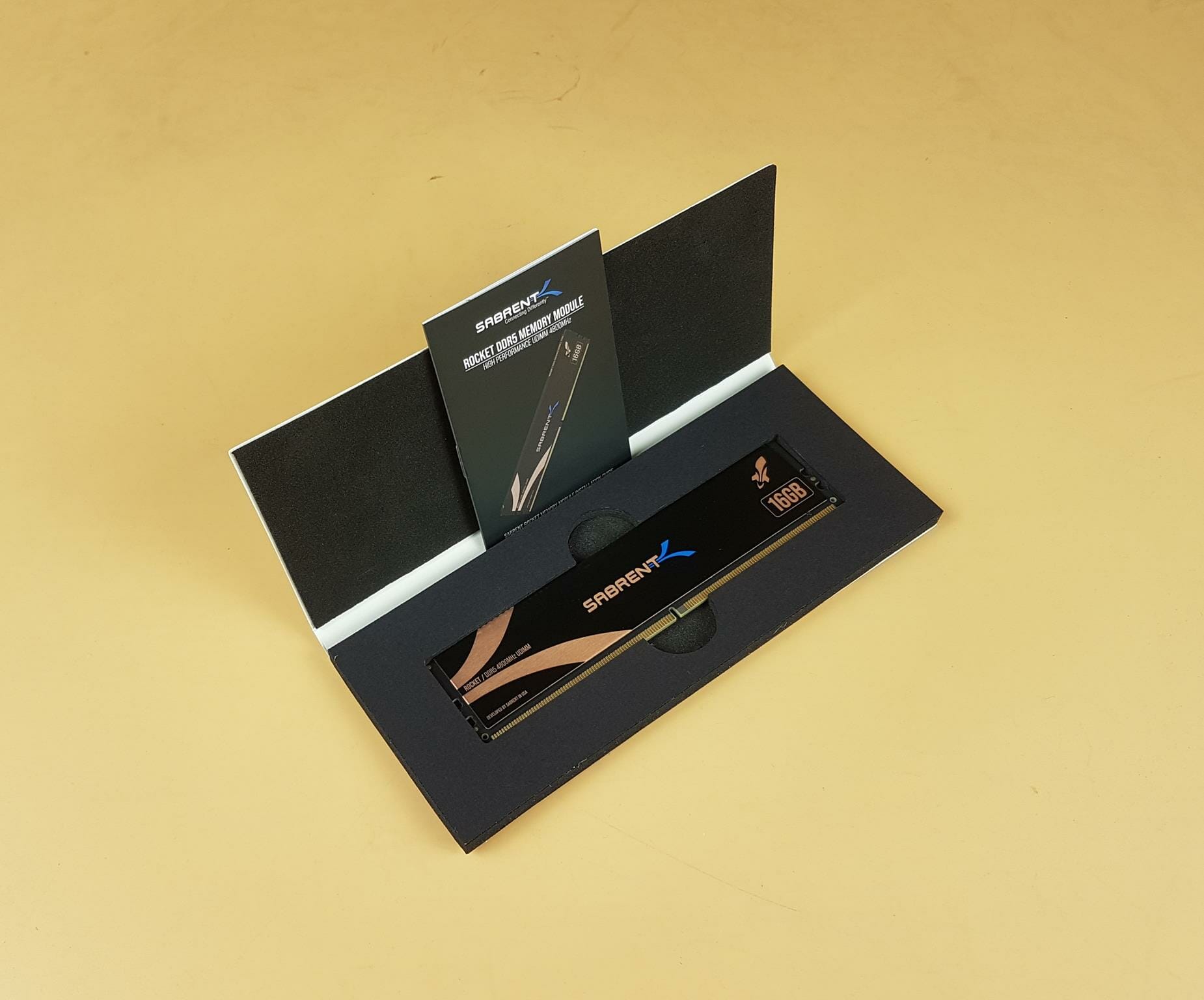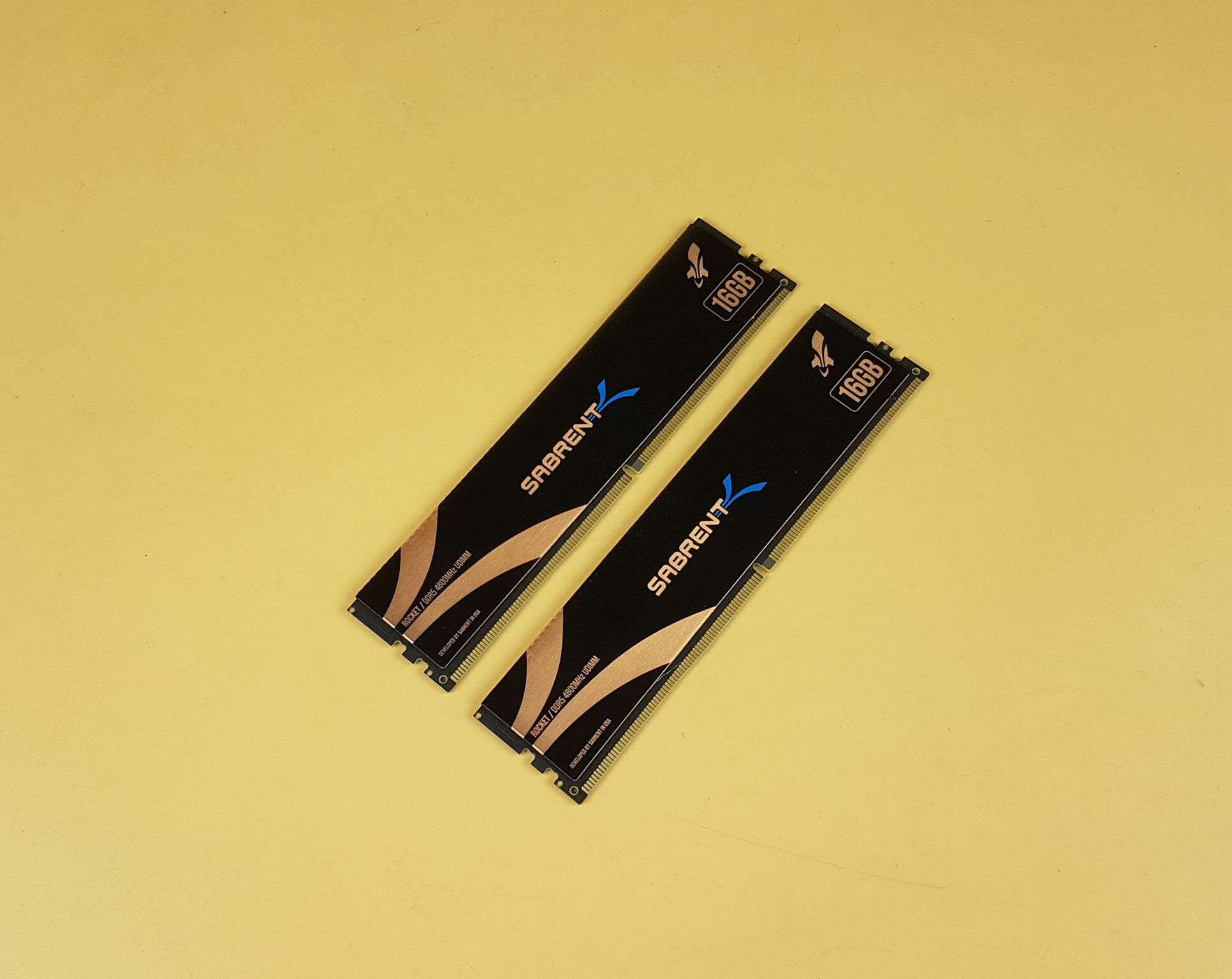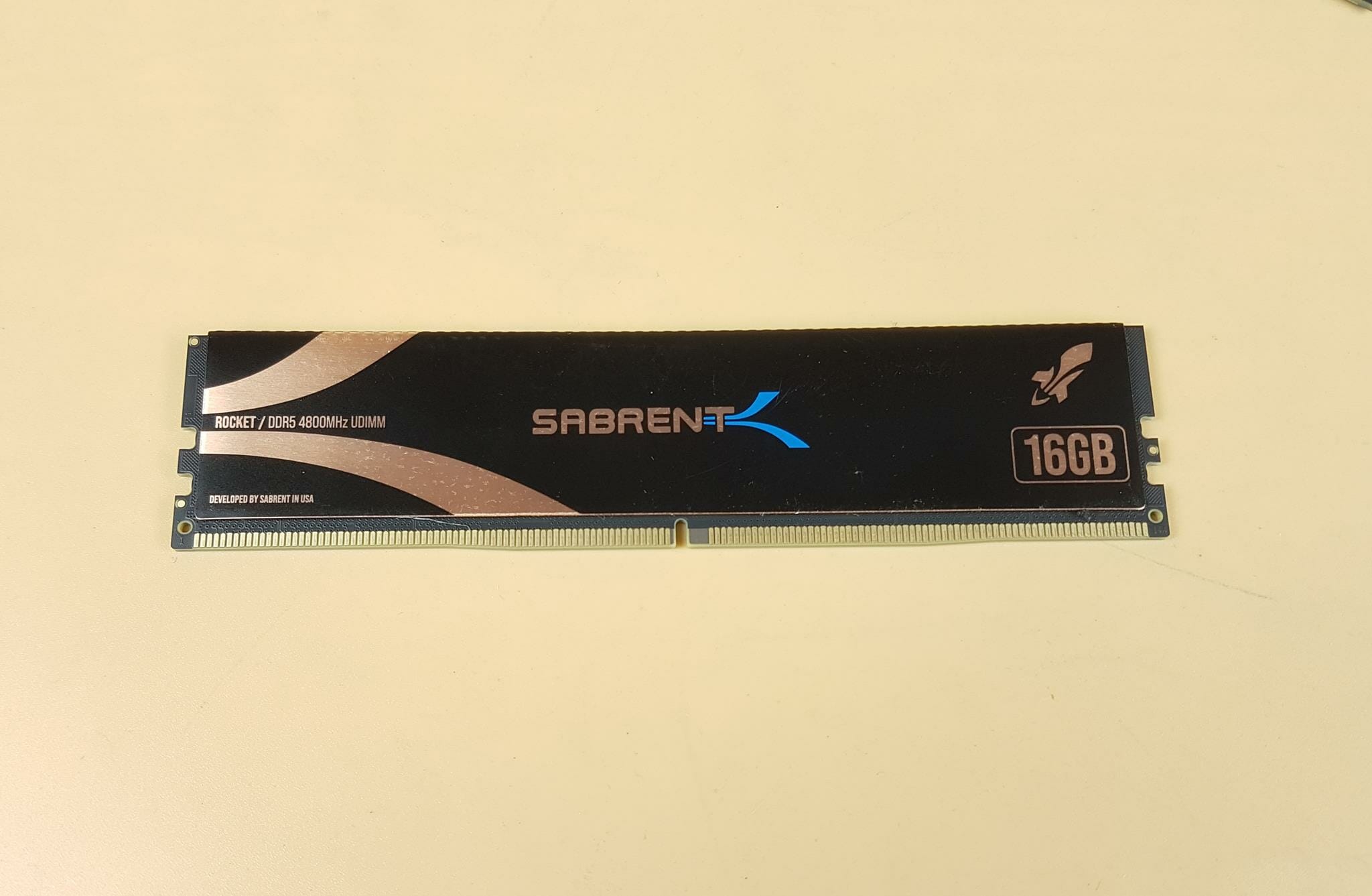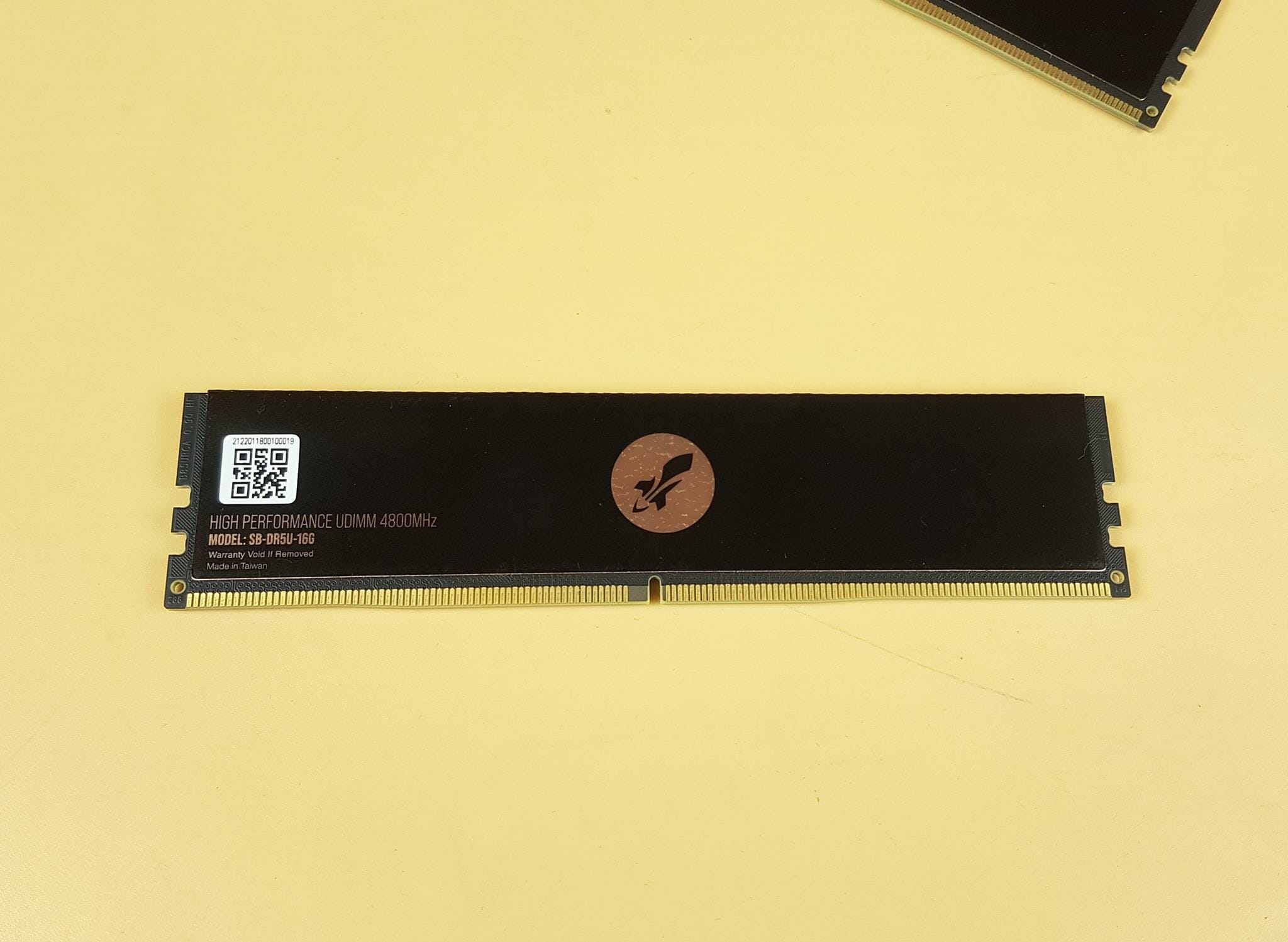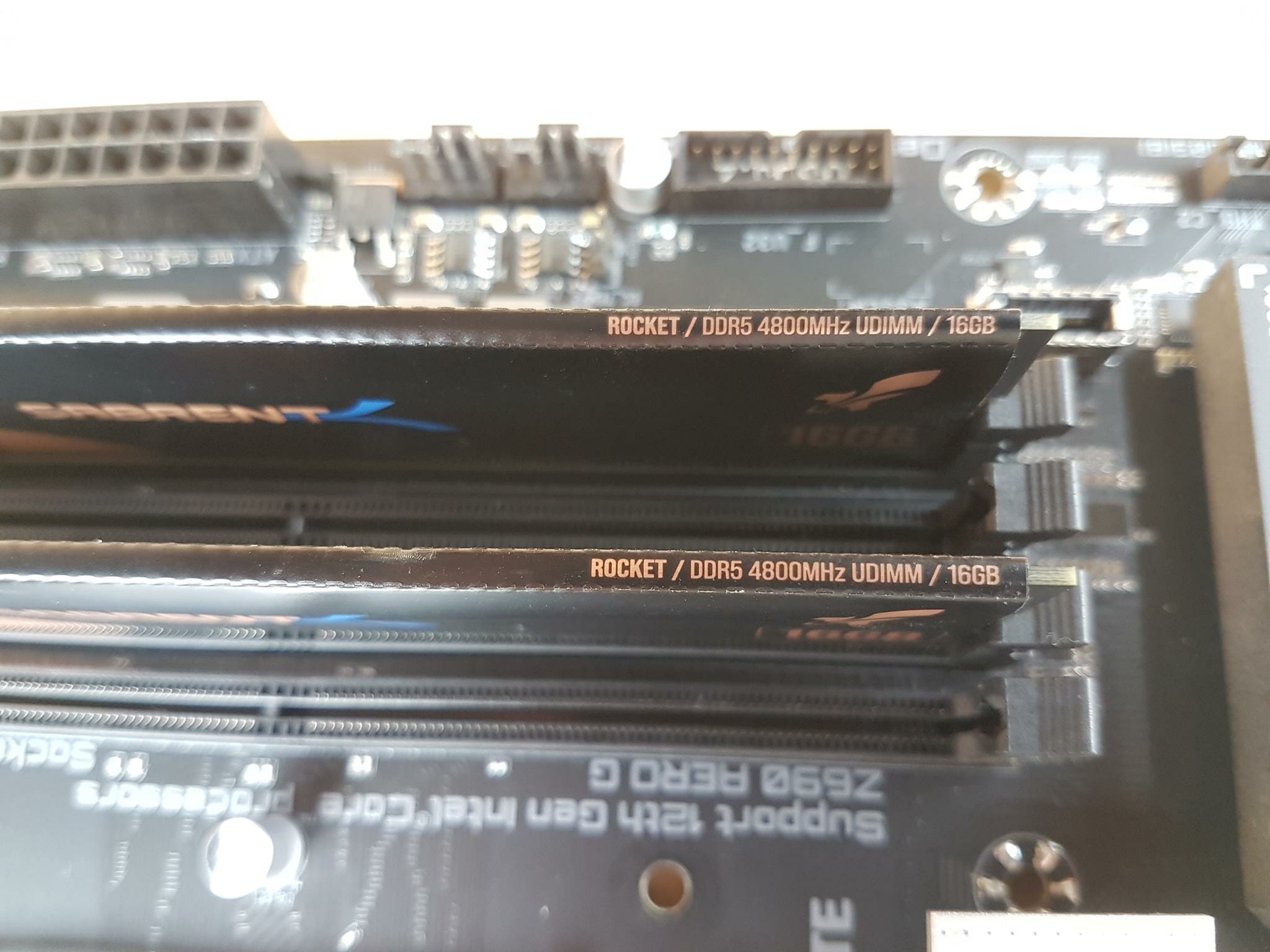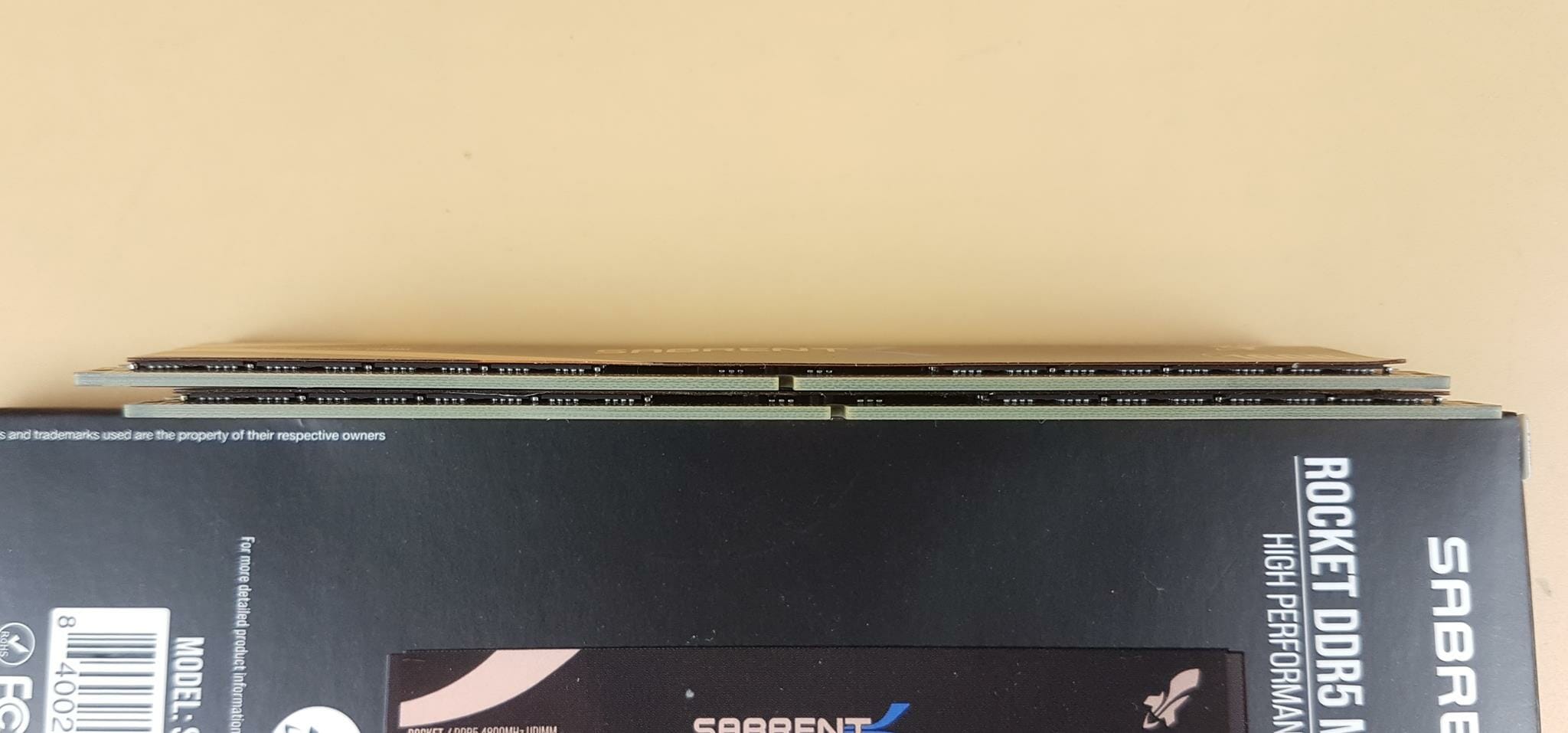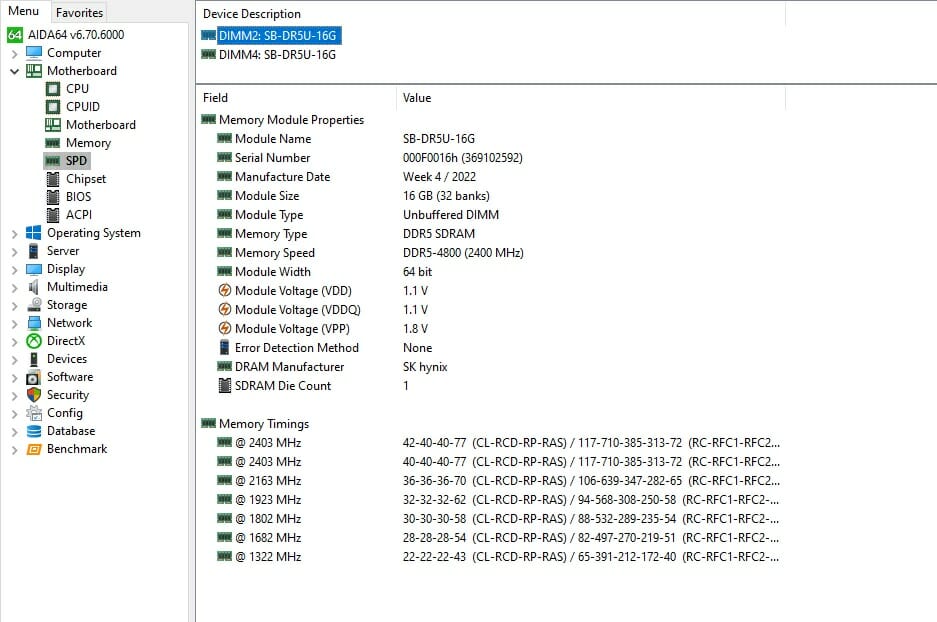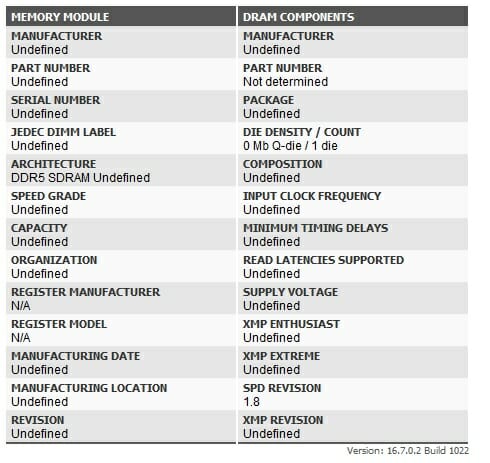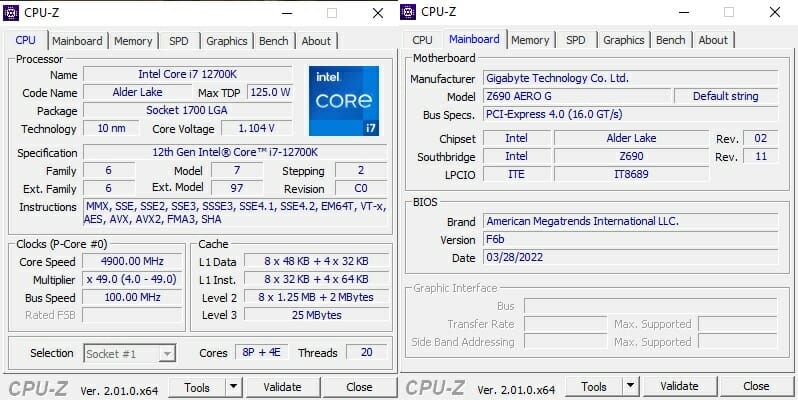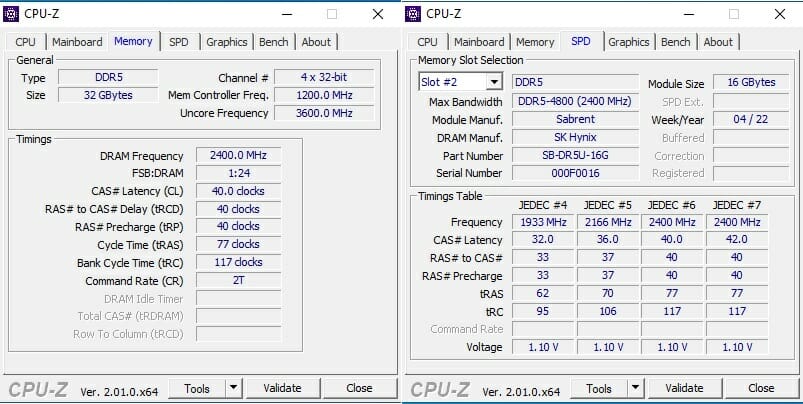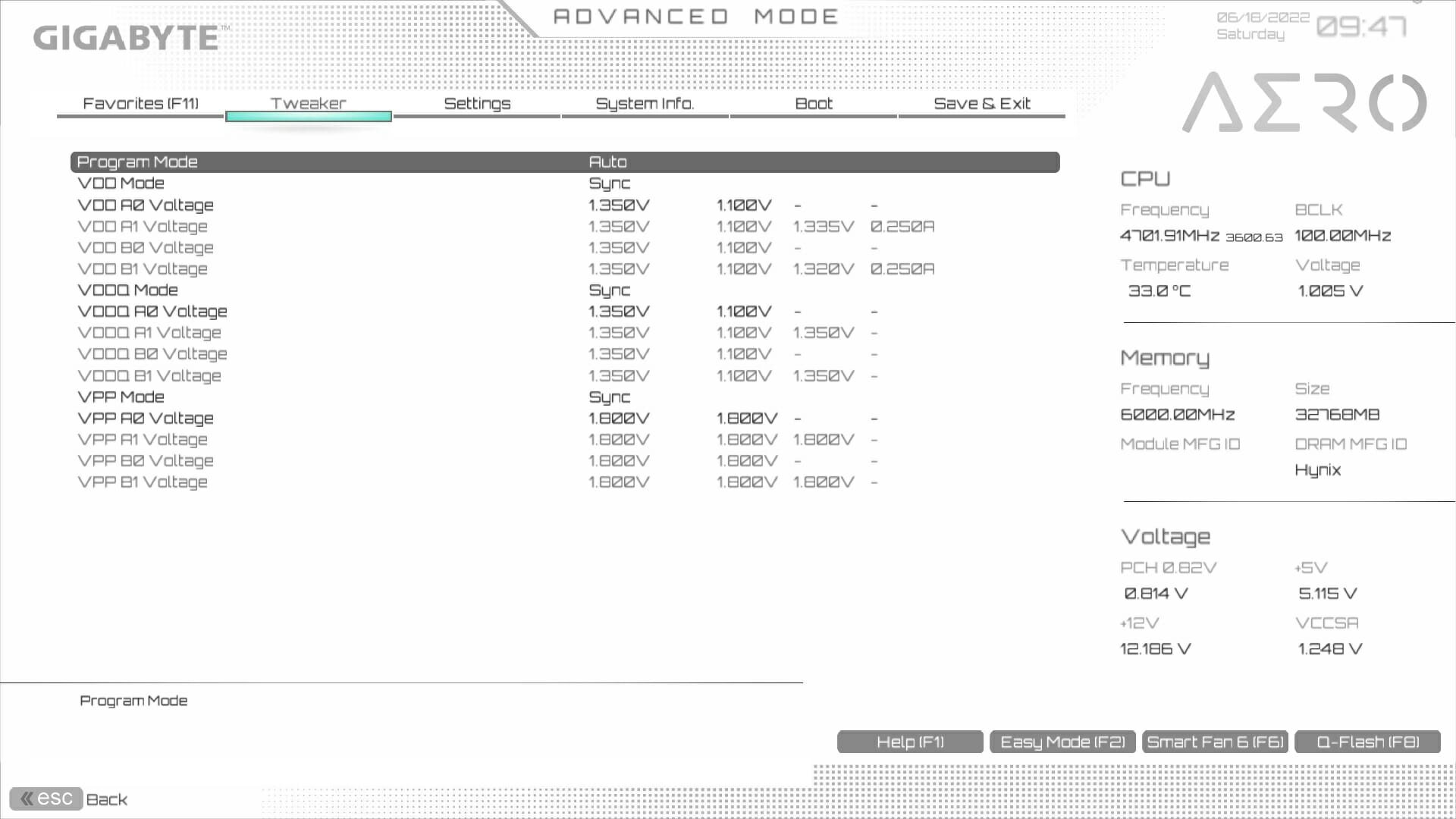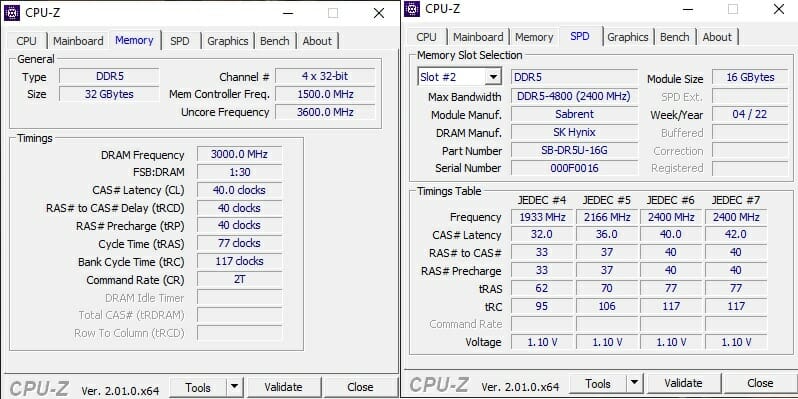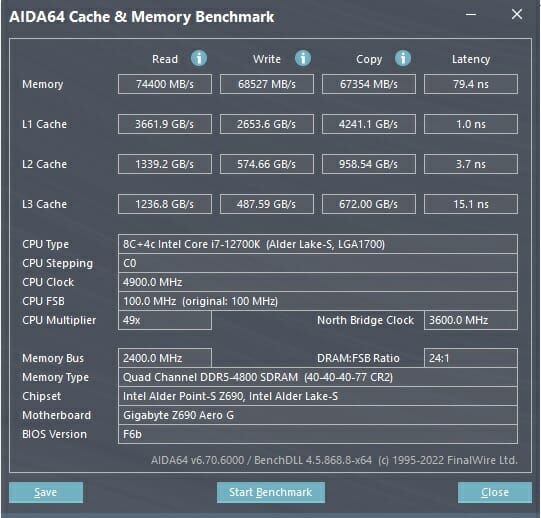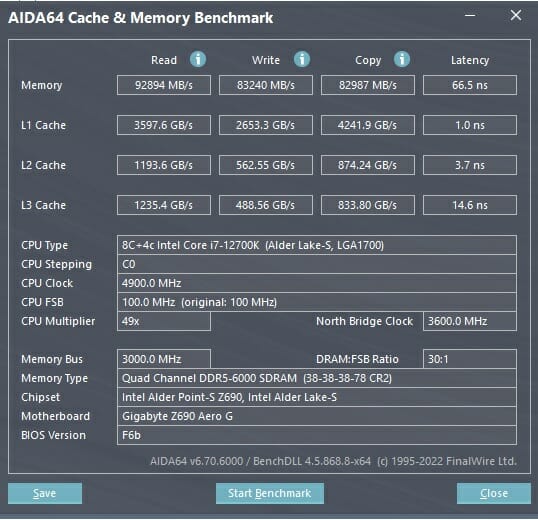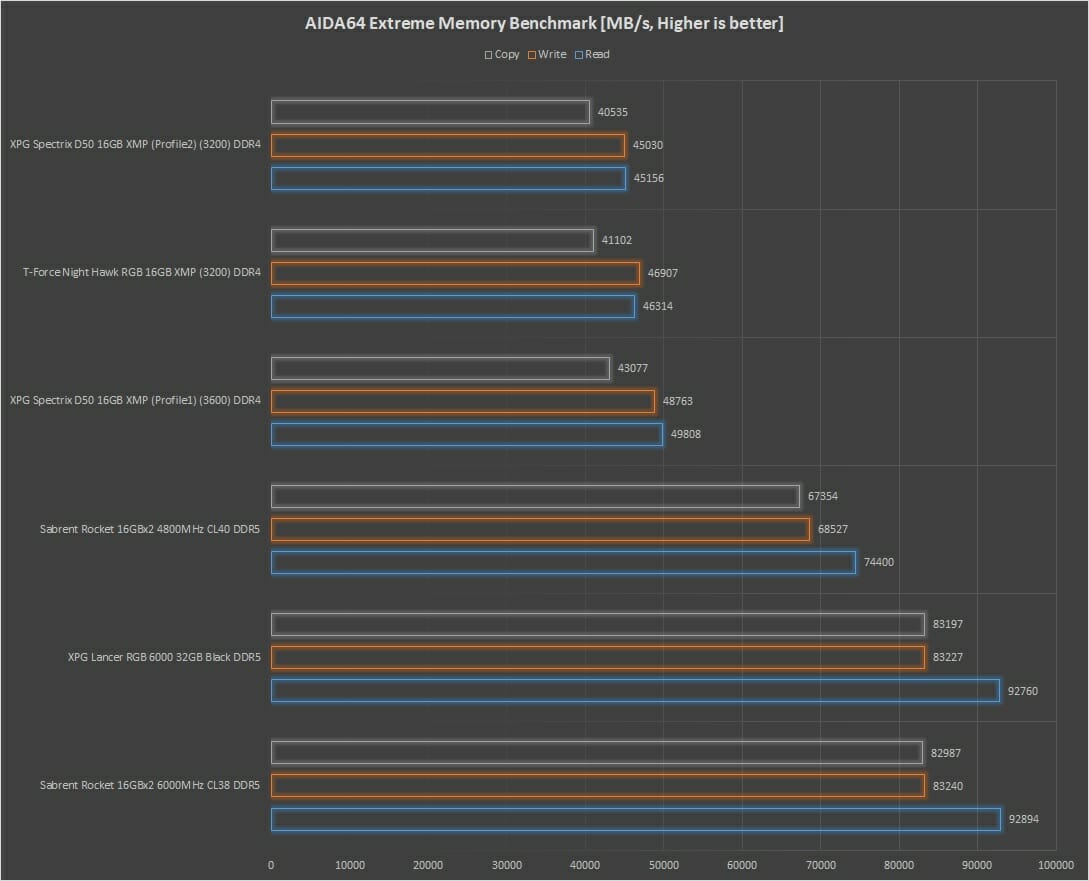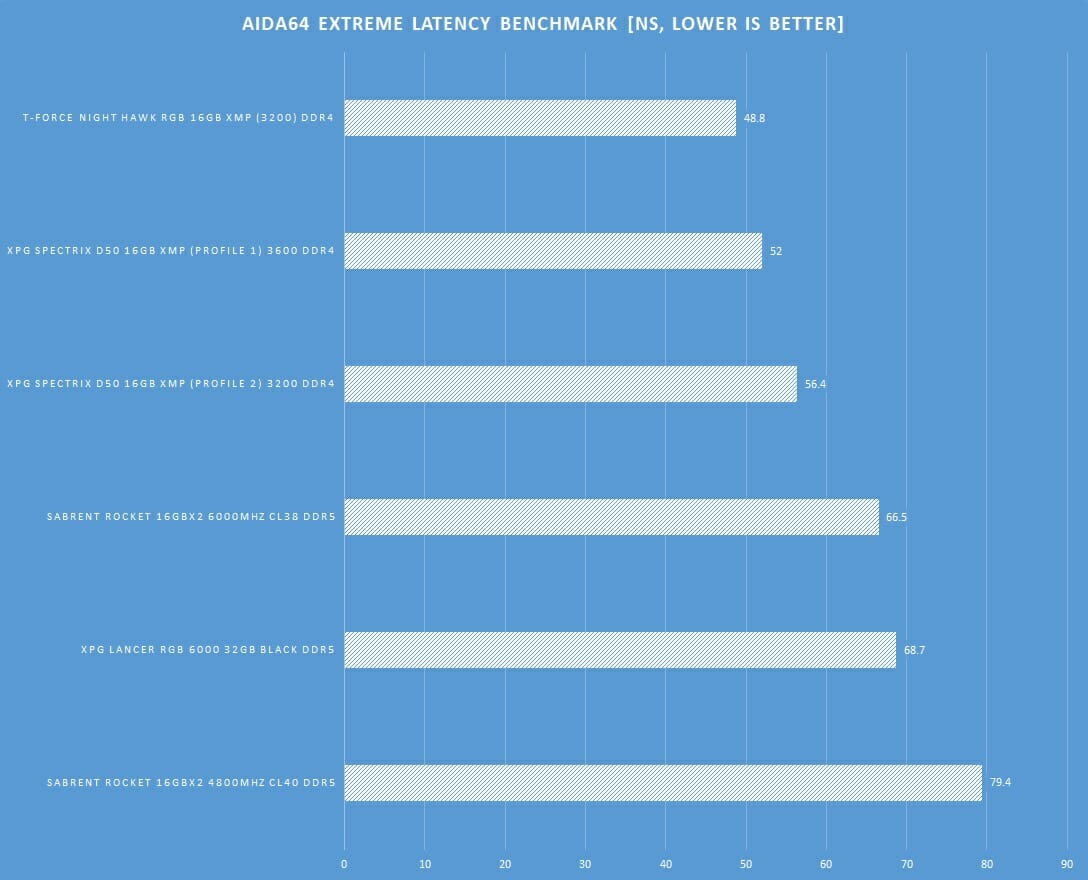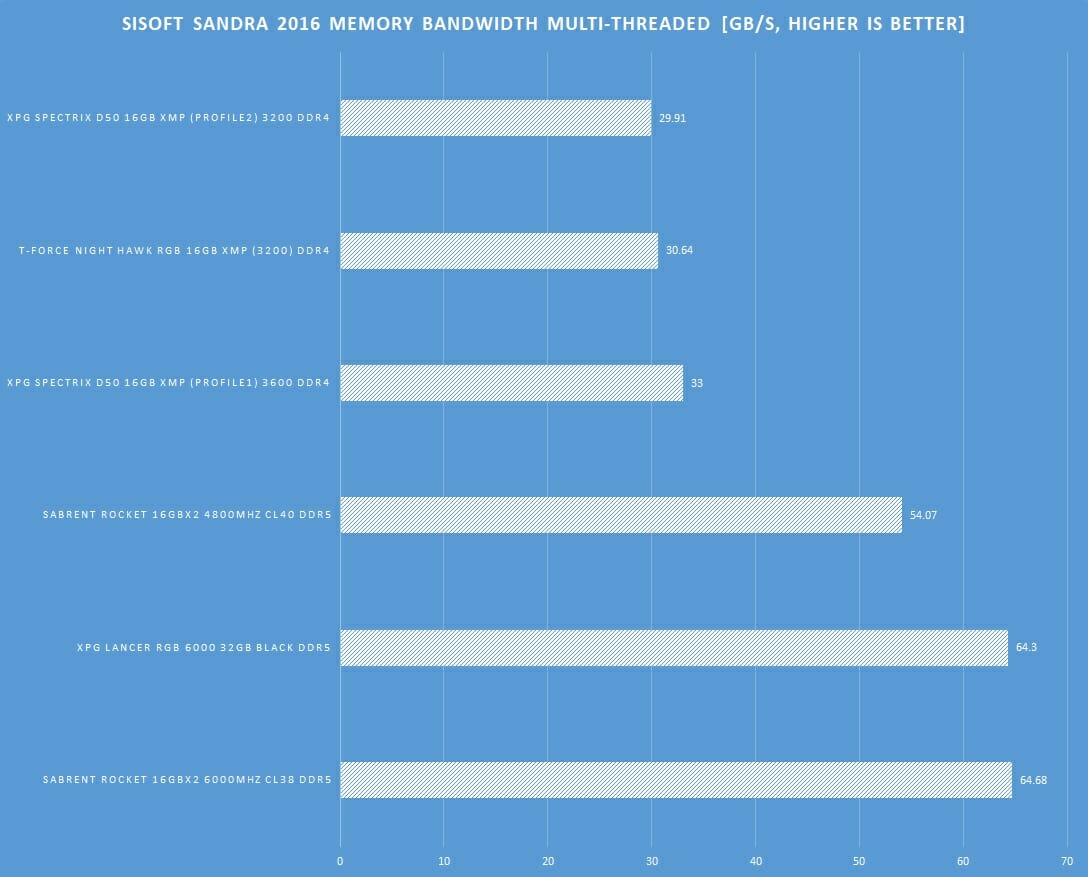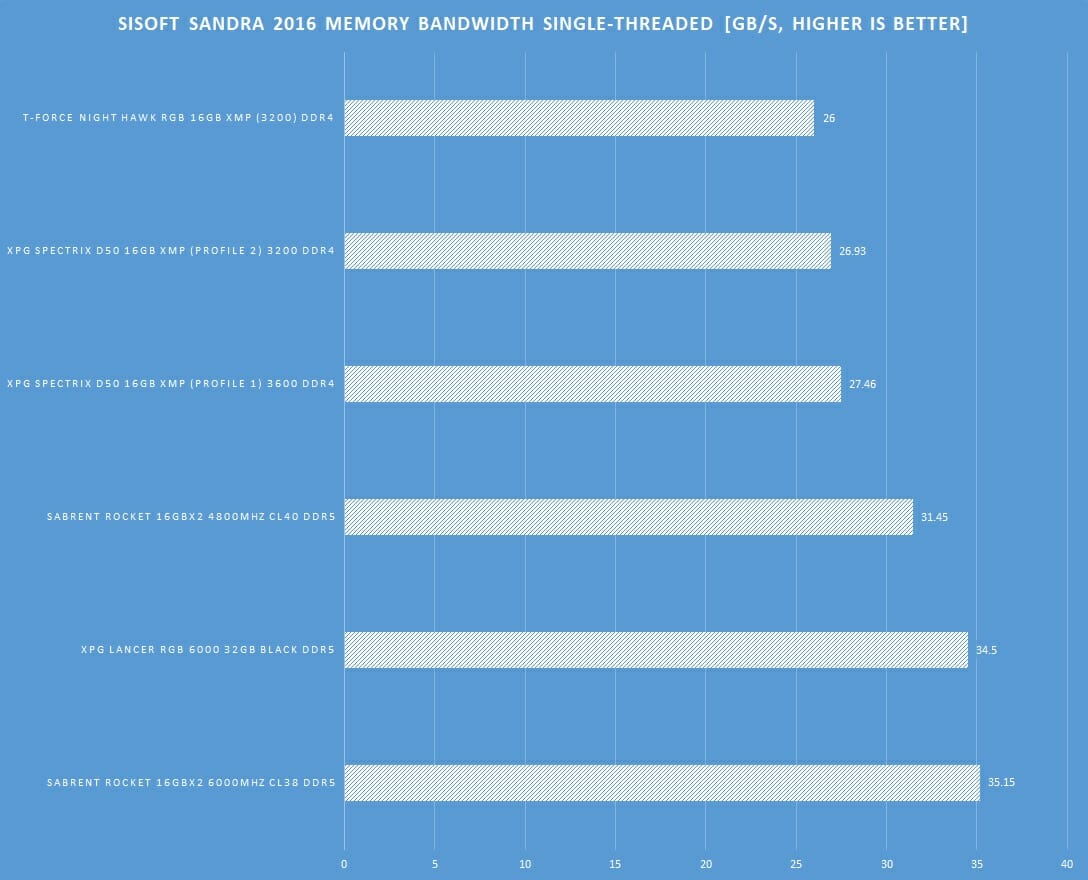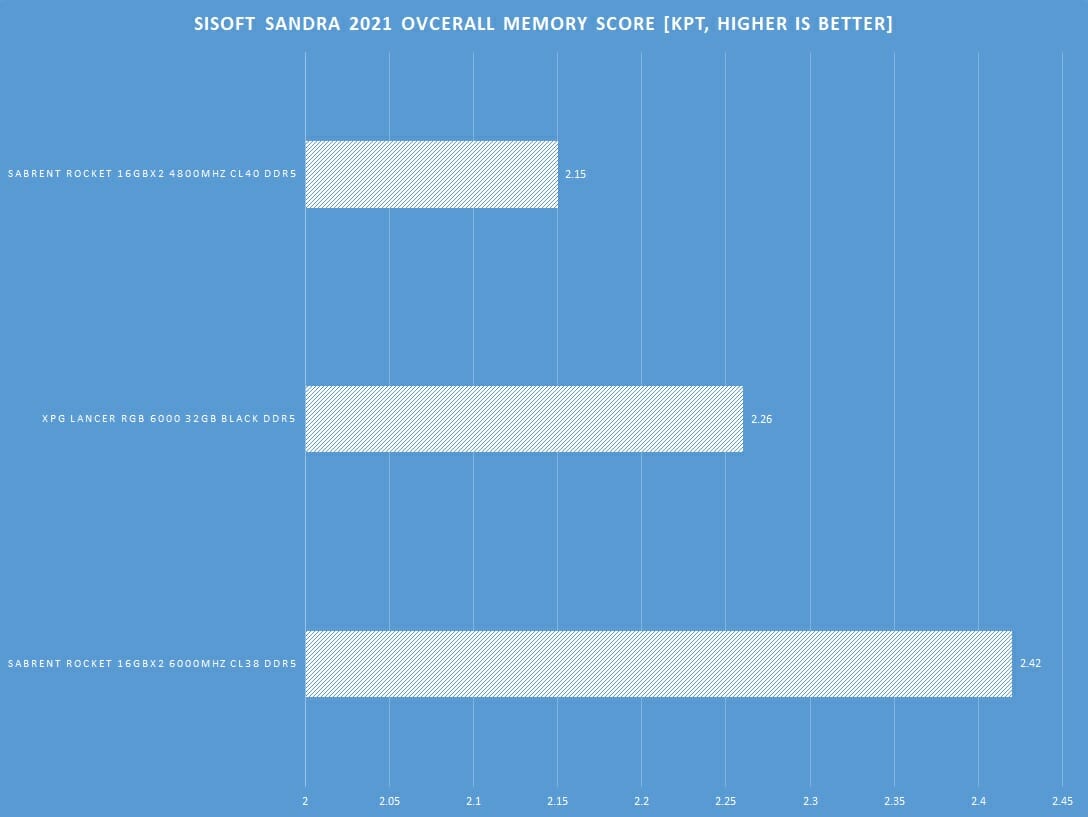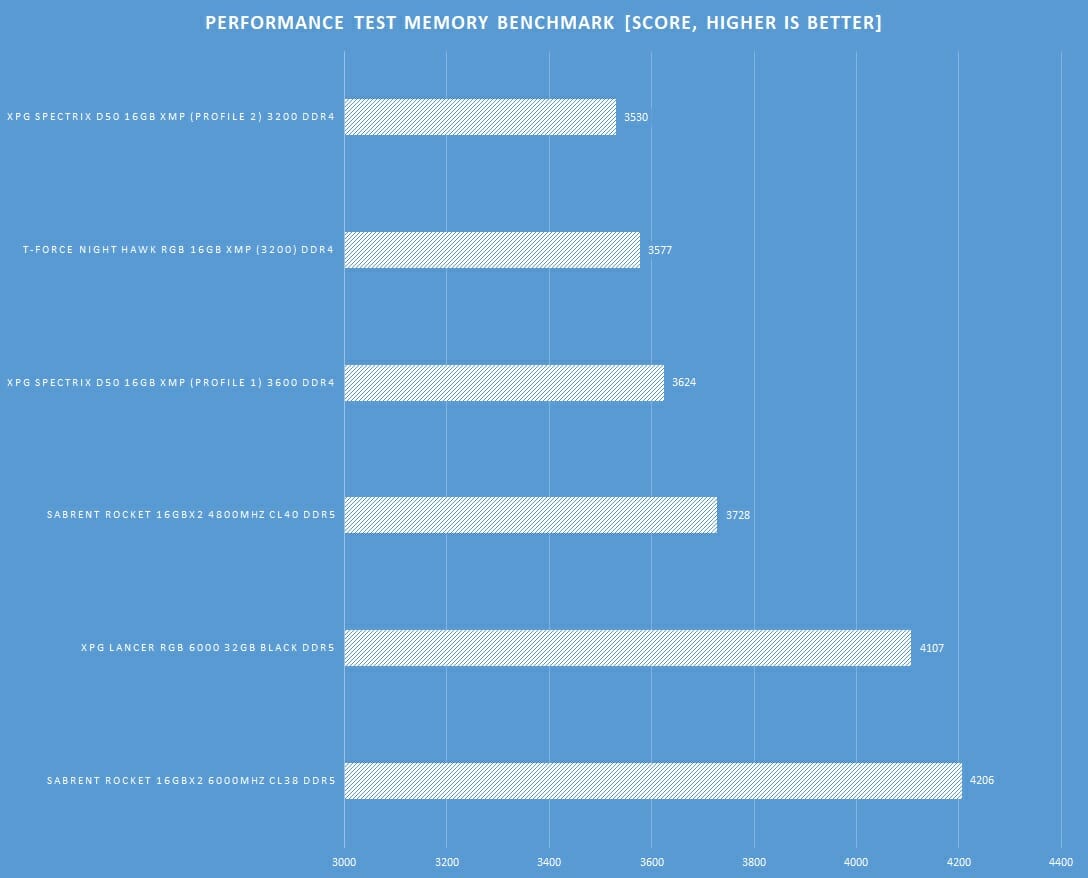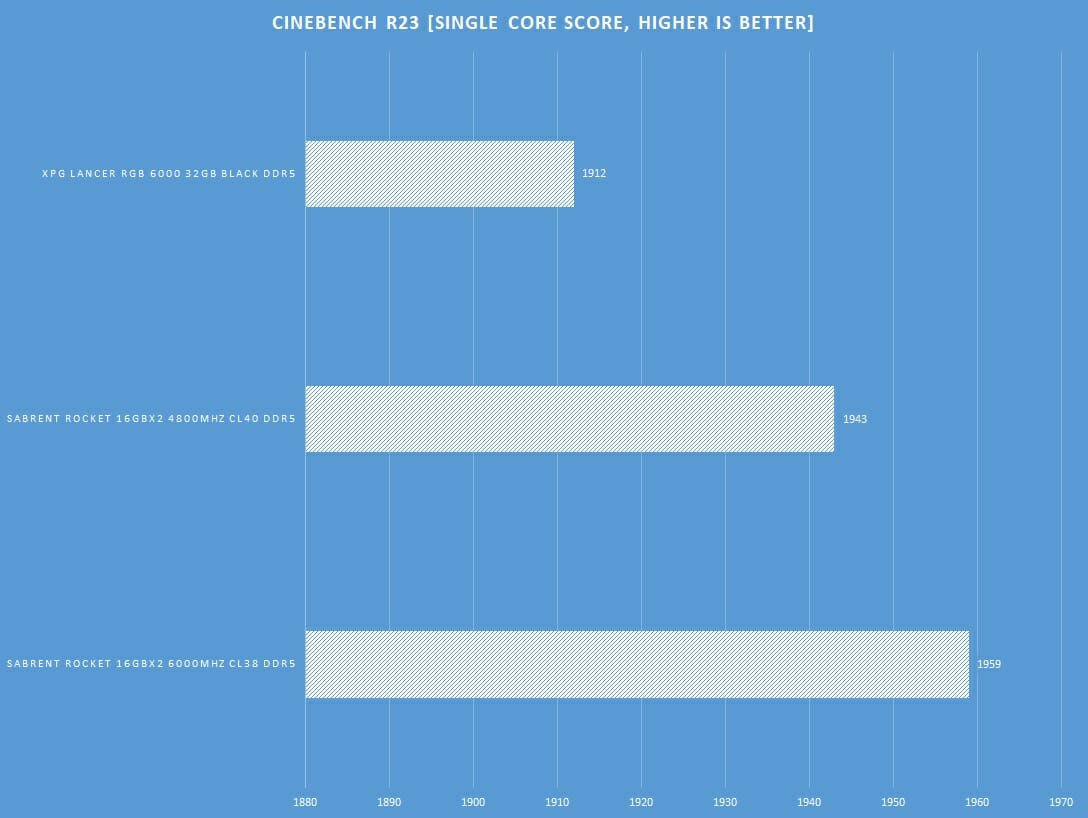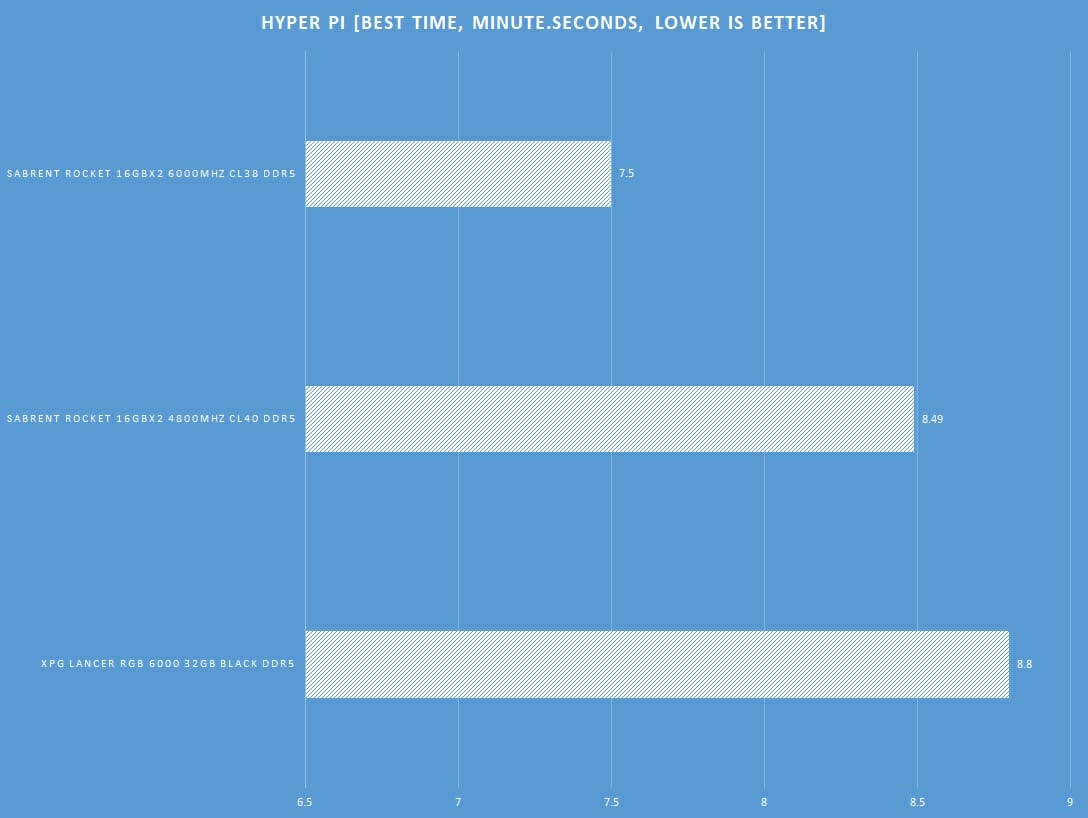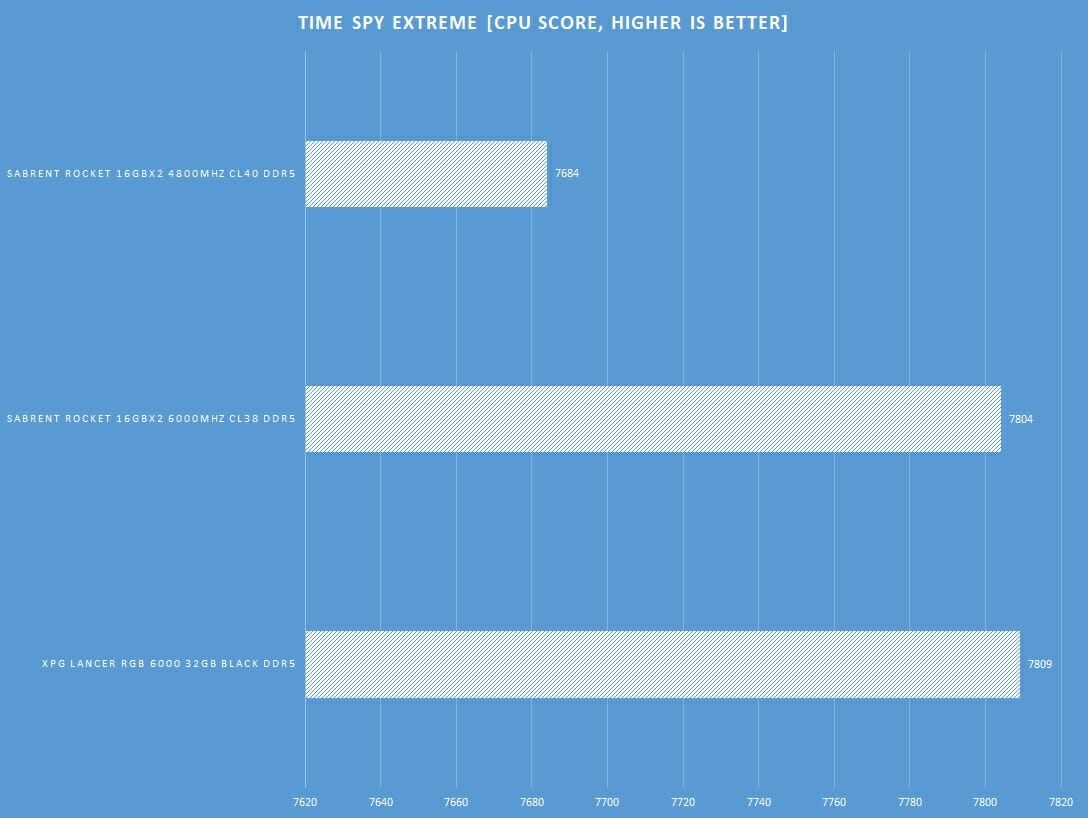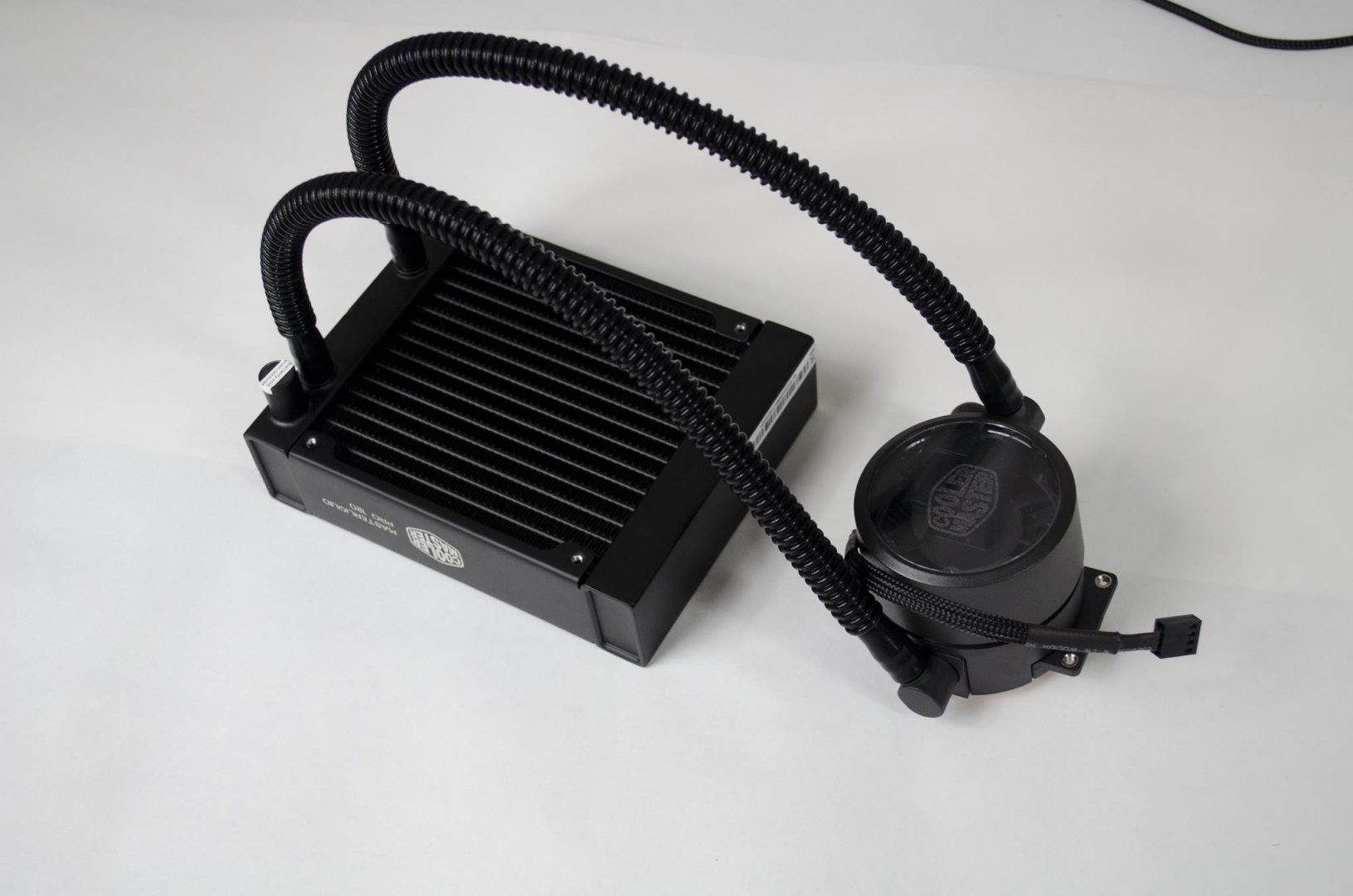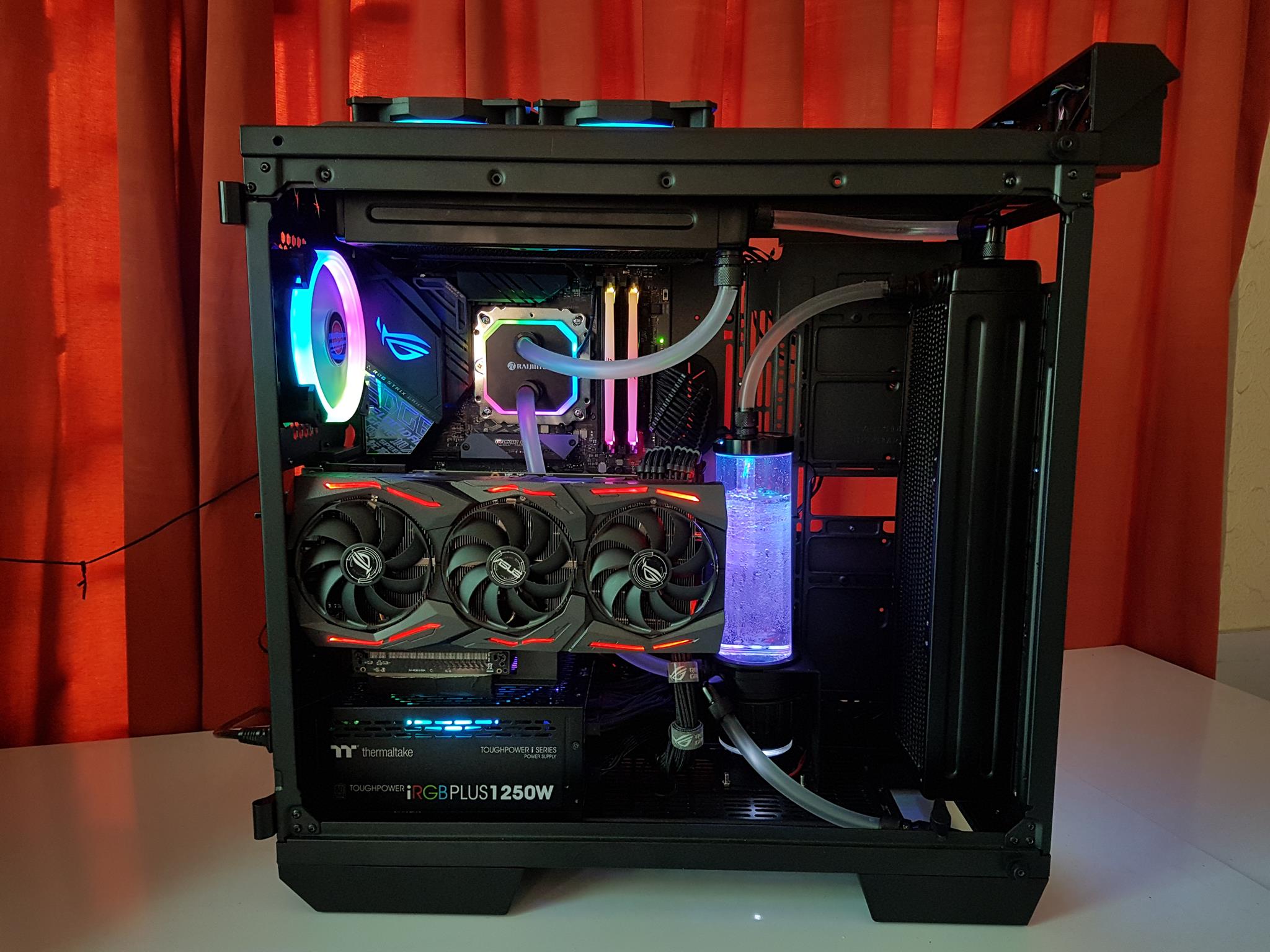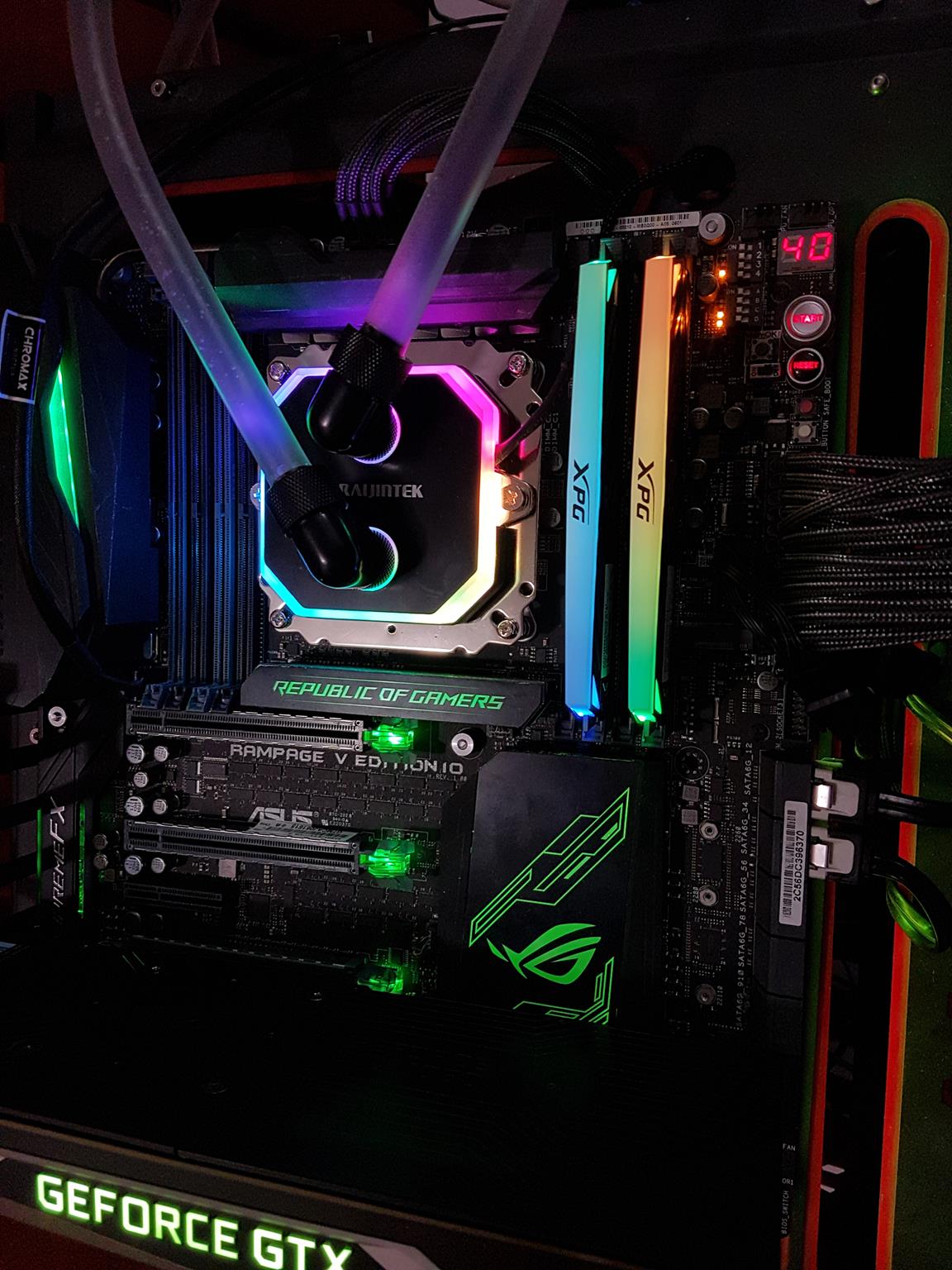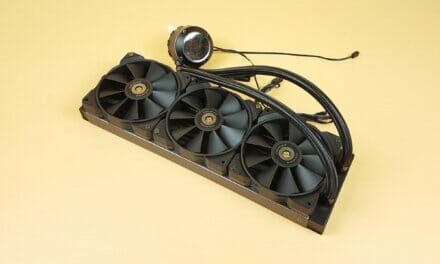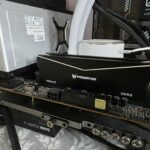
Sabrent Rocket DDR5 U-DIMM 16GB 4800MHz Review
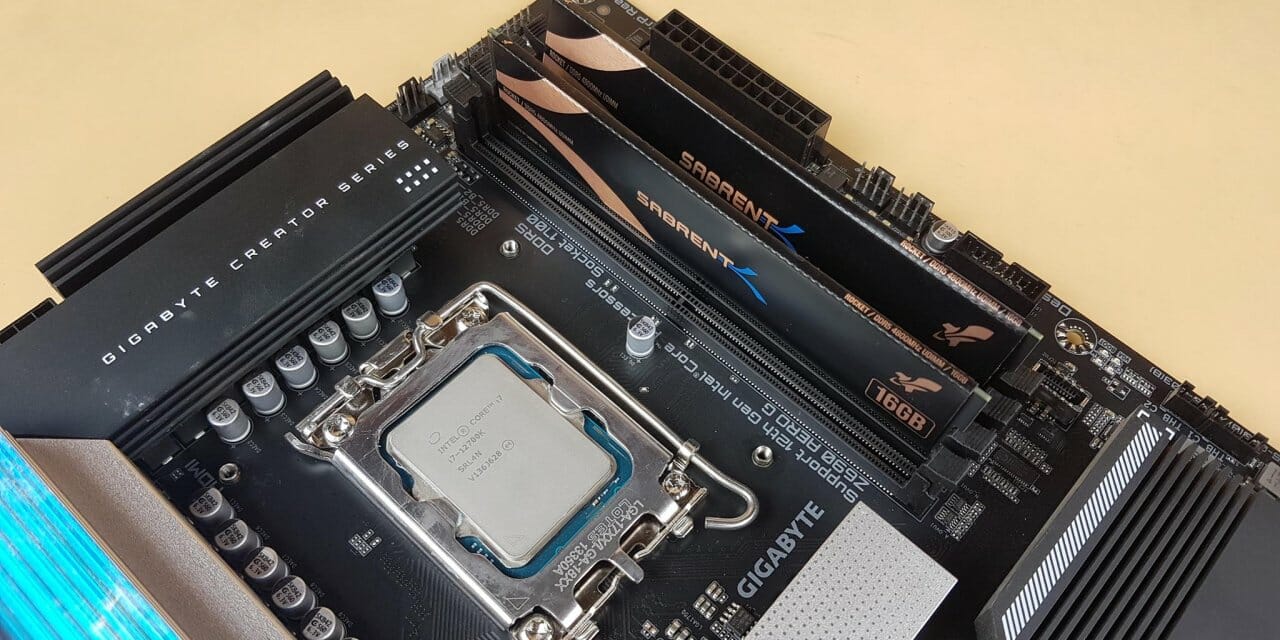
Introduction
Sabrent is well known as a storage products and accessories manufacturer. They have stepped into the ground of RAM for the PC and Laptop. Sabrent is now manufacturing the SO-DIMM and U-DIMM in DDR and DDR5 categories. They have recently launched Rocket DDR5 kits available in 16GB and 32GB variants. Sabrent has taken a different route with their Rocket DDR5 kits. They have employed Sk Hynix chips in these kits and remain at JEDEC SPD for the DDR5 which is 4800MHz using 1.10V. SK Hynix has shown to be giving more overclocking headroom in DDR5 over Micron and Samsung. So, Sabrent’s route with Rocket DDR5 kits is wise enough.
We have received 2 kits of 16GB each. They have a rated speed of 4800MHz using 40-40-40-77 timing at 1.10V. These kits are low-profile design and don’t have heat spreaders. Instead, they have a copper cover to provide heat transfer much like what we have seen on the Rocket 4 Plus NVMe SSDs.
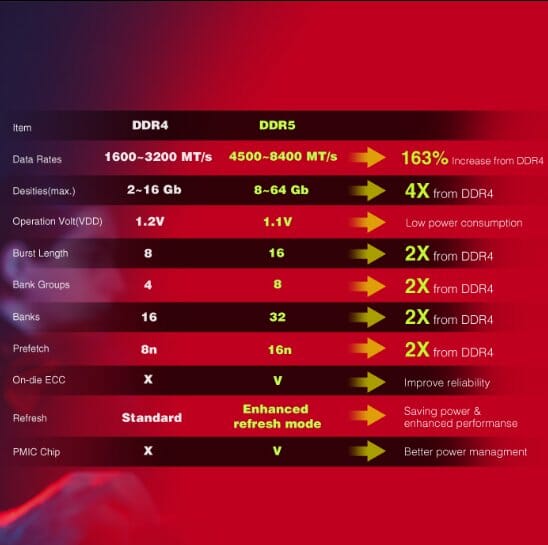
The above table shows the salient differences between the DDR4 and DDR5 modules. Some key notes include 1.1V compared to 1.2V [JEDEC stock voltage], higher densities, more banks & bank groups, provision of on-die ECC on DDR5, and PMIC on DDR5 modules.
Among the key differences between the DDR4 and DDR5, the position of the key notch is different in both which would mean DDR5 RAM can’t be installed on the DDR4 socket. This is despite having the same pin count. The DDR5 modules contain Power Management IC circuitry on the PCB. The PMIC enhances power supply stability. Its lower operating voltage also makes DDR5 more power-efficient than DDR4. Also, DDR5 integrates I/O resistors with CMD/ADD resistors giving a cleaner look.
DDR5 module provides twice more capacity than DDR4 by packing in more banks and bank groups. In addition, Burst Length and Prefetch are also doubled. ECC technology is also featured for data integrity.
Product: Sabrent Rocket DDR5 16GB
Price: $179.99 [At the time of review]
Specifications

Closer Look
Let’s take a closer look at the kits followed by the test results with overclocking.
The kit is shipped inside a paperboard packing box in the Sabrent Rocket theme. The capacity of the kit is 16GB with a speed of 4800MHz. Sabrent sent us two kits.
SB-DR5U-16G is the model of each kit. Here SB stands for Sabrent. DR5 stands for DDR5. U stands for U-DIMM and 16G means 16GB capacity.
Inside each box, there is another container finished in the Sabrent Rocket theme. The above picture shows both containers from both sides.
As usual, Sabrent is on the money with the presentation. The stick is placed in the Styrofoam pad. Another thin layer of the pad is pasted on the top cover. When closed, this would form a nice seal protecting the kit.
The Sabrent Rocket DDR5 kits are available in multiple 16GB and 32GB modules. There is no less than a 16GB module. These kits are not overclocked and conform to JEDEC default specification for DDR5. This would mean there is no XMP profile store in these kits. These are ECC, Unbuffered DIMM with 288-pin layout (DDR5).
There is no heat-spreader on these kits making these a low-profile design. Instead, we have a thin layer of copper on the inside of the cover. Speaking of the cover, it is finished in Rocket theme. Sabrent branding is in the center. 16GB capacity is printed on the far right side whereas the rated speed of the kit is printed on the left.
The dimension of a module is 5.26×1.25×0.13in. The height of the kit is roughly 31mm. This is important information as it pertains to the clearance for the CPU cooler’s fan height. The kits are designed in the USA and made in Taiwan. There is a Rocket branding in the center. A scan label is printed as well.
As we have mentioned above, there is no heat spreader on these kits. There is only a cover with a thin layer of a copper line underneath for heat transfer. The above picture (sorry for the potato quality) shows the top view of the kits. The speed and capacity of each stick are printed over here. The width of each stick is rough 3.3mm.
We have 16 SK Hynix chips each of 1GB size on one side of the PCB. There is nothing on the other side of the PCB. The PMIC is in the center. One can spot the black color thermal pad between the chips and the thin layered copper. These are single-rank kits.
The above is the SPD readout as taken from the AIDA64 Engineer edition. A single module of the Sabrent Rocket DDR5 4800MHz 16GB kit has 32 banks featuring SK Hynix chips. The VDD and VDDQ have a 1.1V rating.
We could not get any reading using the Thaiphoon Burner.
Testing
The following configuration is used to test the kit:
- Intel i7 12700k [Stock, Auto]
- Fractal Design Lumen S36 RGB
- GIGABYTE Z690 AERO G
- Sabrent Rocket DDR5 16GBx2 @ 4800MHz
- XPG Lancer RGB 6000MHz 32GB kit
- Sabrent Rocket Q 500GB PCIe 3.0 NVMe SSD
- Sabrent Rocket 4 Plus 2TB PCIe 4.0 NVMe SSD
- Nvidia GeForce GTX 1080 FE
- be quiet! Straight Power 11 1000W Platinum PSU
- Thermaltake Core P6 TG Snow Edition in an open-frame layout
The following software are used for the testing:
- AIDA64 Engineer
- SiSoftware Sandra Suite 2016 and 2021
- Performance Test
- 3DMark Time Spy Extreme
- Hyper Pi
- Cinebench R23[ Multi, Single]
Important Note: These kits conform to JEDEC default DDR5 speed hence they don’t have an XMP profile. Leave the settings on Auto and the kits will automatically be adjusted to 4800MHz on the default timing. Still, if you would want to be sure anyway, dial in the manual 4800MHz Frequency with 40-40-40-77, 2N timings in the related settings menu under UEFI/BIOS.
The above snapshot is showing the CPU and Motherboard information from the CPU-Z.
The above is a CPU-Z screenshot. Looking closely, you will notice that the software is reporting the kit to be in quad-channel configuration. The reason for that is with DDR5 kits, we have two channels per module with each being a 32-bit wide. I am not sure if 32-bit is inclusive of ECC or otherwise.
Over-Clocking
Before we take a look at the results, let’s talk about the over-clocking of these kits. We were able to push both kits to a whopping 6000MHz frequency with more tight timings of 38-38-38-78. The settings were:
| VDD | 1.350V |
| VDDQ | 1.350V |
| VCCSA | 1.250V |
| VPP | 1.80V |
| Timing | 38-38-38-78 |
| Frequency | 6000MHz |
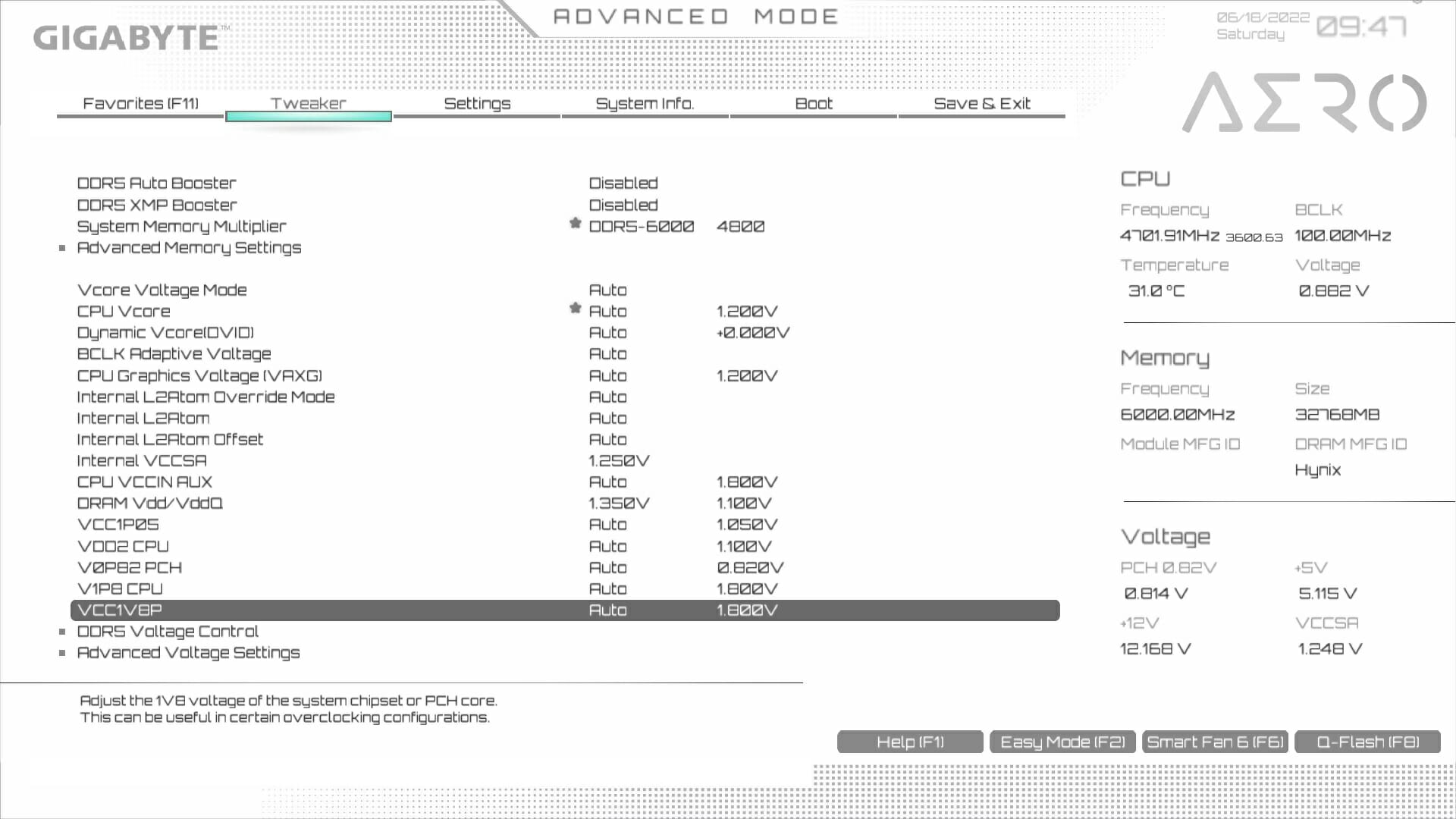
Please note that GIGABYTE Z690 AERO G can only support 6000MHz frequency at present hence we hit that limit. These kits may go further but we are limited by what the motherboard can support. The system posted with 36-36-36-78 timings but it was not stable. 37-37-37-78 were also not stable. 38-38-38-78 gave us stable operations. We ran different games, heavy AVX loads, single loads, etc and the system did not show any glitch or freezing or random restart, or decline in performance.
The above is a snapshot from the CPU-Z confirming the 6000MHz overclock.
The results below include the over-clocking result as well:
The above picture shows the AIDA64 Memory benchmark result from the stock frequency. The latency is high but the speeds are impressive.
The above is an impressive result after overclocking these kits. The result is self-explanatory and latency is improved as well.
The other DDR5 kit in the comparison is from XPG rated for 6000MHz 40CL using XMP 3.0. The Sabrent Rocket DDR5 kits have performed quite well.
We saw an improvement from 79.4ns to 66.5ns when overclocked the Sabrent Rocket DDR5 kit.
The 54GB/s at 4800MHz is a nice result. The Sabrent Rocket DDR5 kit when overclocked to 6000MHz matched the result from the XPG kit.
The single-threaded performance is remarkable with the Sabrent Rocket kits.
We have used SiSoft Sandra 2021 module as well to obtain an overall memory score. The Sabrent Rocket DDR5 even on JEDEC default has a good performance.
The result is self-explanatory.
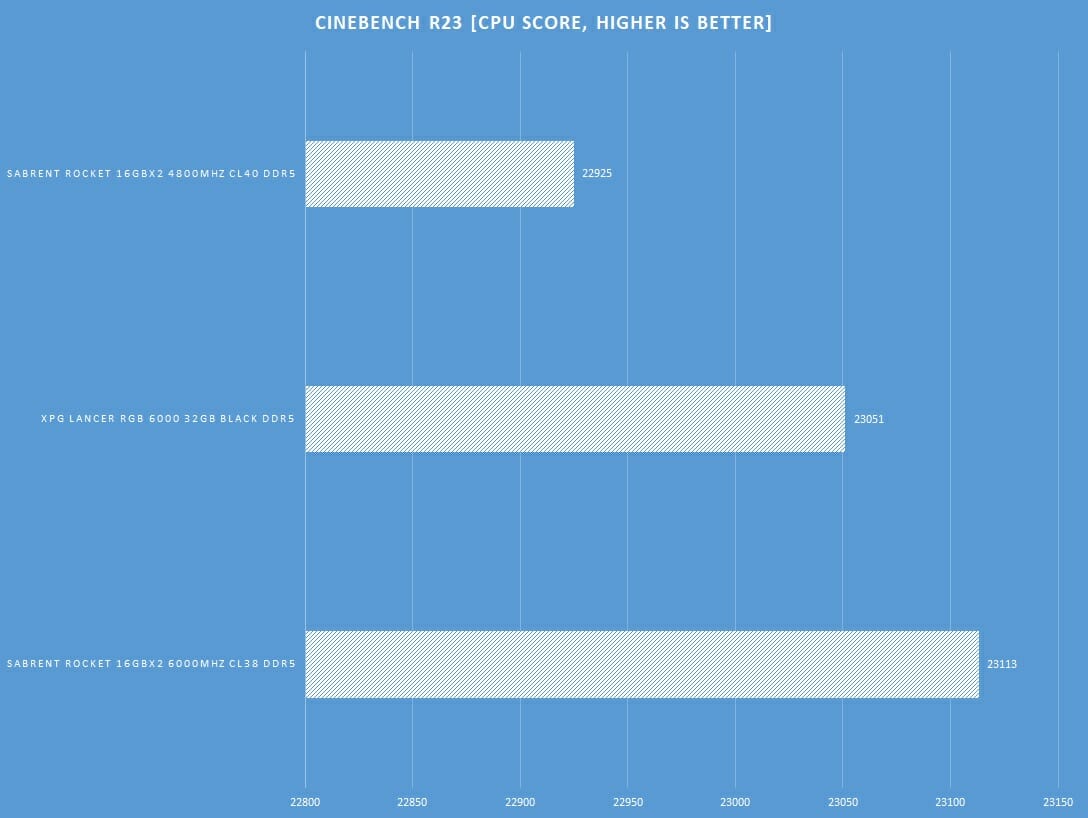
We can see the improvement in the score using high speed and tight timings.
There is not much of a difference between XPG and Sabrent kits on SPD but when the Sabrent kit was overclocked with tight timings, the result is quite good.
The result is self-explanatory.
Conclusion
DDR5 is still in its infancy and we are seeing more and more offers from various manufacturers now. The only supporting platform available for DDR5 is Intel Alder Lake S. AMD is expected to join with their 7000 series. DDR5 has multiple advancements over the DDR4 for example we have 4 times more densities with DDR5, Data rates have jumped from 3200MHz to 4800MHz (JEDEC), the operating voltage is lowered than DDR4, two times more banks and bank groups, dual-channel per module, on-die ECC feature, and PMIC on the PCB.
Sabrent has also joined the PCMR of DDR5 and they have released Rocket DDR5 kits in 16GB and 32GB capacities. We have tested the Rocket DDR5 16GBx2 kits from Sabrent. These kits are rated at 4800MHz (JEDEC Default) using 40-40-40-77 timing with 1.1V for the VDD and VDDQ and 1.8V for VPP. Since these kits are conforming to JEDEC defaults, there is no XMP profile on these kits. They are plug-n-play as the BIOS on Auto will load the correct speed and the timings. Nothing wrong if you would want to dial in the values manually.
These kits have a dimension of 5.26×1.25×0.13in. The height of the kit is roughly 31mm. This is a low-profile design because they don’t feature any elaborative heat-spreader. We have a paper cover with a thin layer of copper on the inside for heat transfer. These covers are finished in the Sabrent Rocket branding. A single stick has a 0.7 oz weight.
These kits have employed SK Hynix chips. The black color PCB has one side populated with 16 chips each having 1GB capacity. THE PMIC is located in the center. The other side of the PCB is blank. There is a black color thermal pad between the chips and the thin layered copper plate.
Intel is not entertaining the warranty claims even if the RAM is used with XMP when the XMP overclocks the RAM over the JEDEC default (4800MHz at 1.1V) as it is still an overclocking. From that perspective, these Sabrent Rocket DDR5 kits are safe to use as they conform to JEDEC defaults. But this is not all. How about overclocking these Rocket kits? This is where the SK Hynix comes to play its significant role. We were able to push the kits to a whopping 6000MHZ. Here is the table presenting the comparison:
| Default Speed | OC Speed |
| 4800MHz | 6000MHz |
| Default Timing | OC Timing |
| 40-40-40-77 | 38-38-38-78 |
| Voltage | Voltage |
| VDD/VDDQ = 1.1V | VDD/VDDQ = 1.350V |
| VPP = 1.8V | VPP = 1.8V |
We have tested the kits on the GIGABYTE Z690 AERO G using Intel i7 12700k. This motherboard has a RAM speed of up to 6000MHz using BIOS update F6b (the latest BIOS update at the time of this content). I think these kits can push for more. Our motherboard can support DDR5 up to 6000MHz and this is the limit we hit.
The Sabrent Rocket DDR5 16GB U-DIMM 4800MHz is rated for $179.99 at the time of the review. This is a steep price given that these kits have JEDEC defaults and are not overclocked but the overall prices of DDR5 are still high for that matter and these kits have a high potential for overclocking with more headroom as our testing has shown. I like the approach Sabrent has taken with their Rocket DDR5 kits. On one hand, they have conformed to JEDEC defaults and on the other hand, they have used good quality, binned SK Hynix chips featuring healthy overclocking. With the to-be right price tag, these kits are a Must-Have for any enthusiast, gamer, or content creator alike. Sabrent means business with their Rocket DDR5 kits and that is rightly so. We are impressed with these baseline kits which are OC heaven.
Thanks to Sabrent for the provision of Rocket DDR5 16GBx2 kits.
















